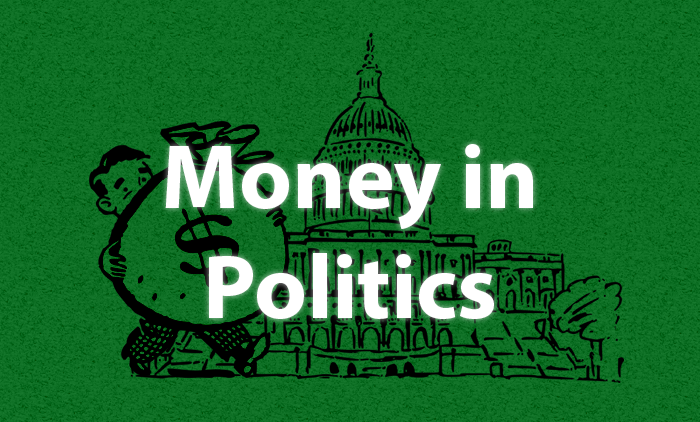Clinton’s main super PAC, Priorities USA Action, raised $8.5 millions in April. Bernie Sanders remains the only one of the remaining three candidates to not receive six-figure donations
Of the three remaining presidential candidates, Democratic frontrunner Hillary Clinton is the candidate that relies most on big donors, according to the Stigler Center’s latest analysis of the candidates’ fundraising records.
The latest update of the Campaign Financing Capture Index—a project by the Stigler Center that tracks the attempts of large political contributors to affect public policy by focusing on the fraction of total funds raised from large donors—finds that (as of April 30) 37.8 percent of the $322.7 million raised by the Clinton campaign and the main PACs and super PACs backing her candidacy came from donations above $5,000. 30.6 percent came from donations above $100,000, compared with 29.6 percent for John Kasich and 39.1 percent for Ted Cruz, both of whom have dropped out of the race by now.
Overall, the latest data shows very little change for Bernie Sanders and Donald Trump, who remain the low end of the index. 3.4 percent of Trump’s campaign and major super PAC donations are above $5,000, and 1.7 percent are above $100,000. As for Sanders, the latest data shows a slight uptick in the share of donations above $5,000 raised by his campaign, from 0.4 percent in March to 1.6 percent in April. Sanders remains the only one of the remaining three candidates to not receive six-figure donations.
Clinton’s main super PAC, Priorities USA Action, raised $8.5 millions in April. Both Cheryl and Haim Saban donated $1.5 million (each) in April, after donating $1 million each in March. S. Daniel Abraham, the founder of the weight-loss brand Slim-Fast, contributed $1 million to Priorities USA Action. Alex Soros, son of billionaire investor George Soros, contributed $1 million.
Overall, Sanders continued to outraise Clinton in April, with just over $25 million in donations, the vast majority of them from small donors. Sanders’ campaign committee has so far raised $206 million, of which $127.4 (roughly 60 percent) came from donors giving less than $200. Clinton’s campaign has raised $185.6 million so far, not including super PACs that cannot coordinate with her campaign.
With the exception of a $50,000 donation from Republican operative Eric Beach, who works for his campaign, the Trump super PAC Great America PAC (the only super PAC that supports Trump and releases monthly filings) raised only contributions below $5,000 in April. As of late April, Trump has loaned his campaign $43.8 million.
The analysis was done based on data collected from the FEC website, and comprises all the contributions made to campaigns, major super PACs and leadership PACs until April 30.
The Campaign Financing Capture Index analyzes the distribution of political contributions to presidential candidates and takes into account individual contributions and contributions made to the PACs, super PACs and joint fundraising committees that support each candidate. The idea behind the index is that large political contributions represent more than the mere expression of political preference, and are more likely meant to influence policy in favor of the donor’s interest. When the percentage of funds raised from large donors is significant, as it has been in recent years, this problem becomes acute. The Stigler Center will publish a concentration and distribution analysis every three months until the presidential elections.







